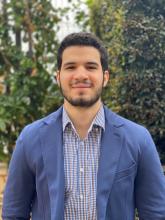Supervisor: Prof. Minna Sunikka-Blank
 |
Research overview:
Several countries in the Middle East-North Africa (MENA) region have committed to increasing the percentage of renewable energy to achieve 15–50% of the energy supply by 2030. In Palestine, however, local authorities' contribution towards the sustainable energy transition is often overlooked due to dependence on central authorities. In response, this PhD research develops an integrated analytical framework for addressing justice within sustainable energy transitions in conflict contexts and applies it to the case of sustainable energy supply by Local Government Units (LGUs) in Palestine. Using surveys and interviews, a multi-staged Explanatory Design is adopted to analyse the production and reduction of the Palestinian energy injustice. The technical and financial analysis implied that the ability of LGUs to develop solar PV stations is contributing to the reduction of energy injustice. Additionally, the LGUs agency in the renewable energy sector is challenging the notion of centralisation. The findings indicate that LGUs can pave the road towards decentralisation of the energy system, which is suitable for disconnected communities under geopolitical constraints. Overall, the research suggests that LGUs can become significant actors in facilitating the sustainable energy transition in conflict zones if LGUs are systemically engaged and empowered by the national-international governance levels.
Biography:
Yasser M. Khaldi is an engineerand has worked in multiple national consultancy positions on sustainable energy transition in Palestine for UNDP, Middle East Investment Initiative (MEII), and the Palestinian investment fund (PIF). Previously, he worked in Qatar with CCC on large-scale infrastructure as part of their 2022 World Cup projects. As a Chevening scholar, he earned his master's degree in Urban Strategies & Design at the University of Edinburgh in 2016. He is the publisher of three photography books about three major Palestinian cities: Jerusalem, Ramallah, and Bethlehem. He always draws inspiration from Palestine, where his first design work was implemented in 2013, known as King Abdallah II Square in Ramallah.
